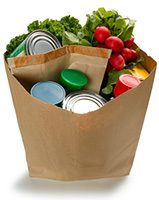The good news is that we’re spoiled for choice in the grocery store these days. The challenge is understanding all the information around those choices.
Apparently, some of the items we buy on a regular basis may not be as bad for us, or as good for us, as we think they are.
Are nitrates really that much of a nuisance?
If you buy ham, bacon, hot dogs, sausages, or cold cuts, you’re probably worried about nasty nitrates. Nitrates relate to the synthetic food additive, sodium nitrate, which is used in processed meats to keep the pinkish colour, increase shelf life and prevent growth of bacteria. In recent years, there have been concerns that synthetic sodium nitrate may be a potential carcinogen in large doses.
Meats contain small amounts of nitrates already, and in most cases, if synthetic sodium nitrite is not used, producers will use a substitute—usually naturally-occurring sodium nitrates from celery juice. Since these alternatives are natural, meat manufacturers can describe them as “natural ingredients” on food packaging labels. Thankfully, the Canadian Food Inspection Agency has regulations over the amount of synthetic sodium nitrate levels allowed in foods.
What’s the stink over food dyes in cheese?
Whether cheese is obtained from a cow, a goat, or a sheep, the colour can vary in hue based on milk type and an animal’s diet, in particular their beta-carotene levels. Decades ago, some cheese makers aimed for colour consistency to appeal to consumers and began to add annatto, a natural plant extract with similar properties to beta-carotene. Although called a ‘natural’ pigment, annatto is still a food dye and can potentially be the cause of sensitive or allergic reactions. The debate over the health risks of food dyes goes beyond cheese, so if you have concerns, keep your cheese choices to dye-free options.
Tagged under: family,food,shopping,cooking,meals,myths,nitrate,grocery
Category: food-news






